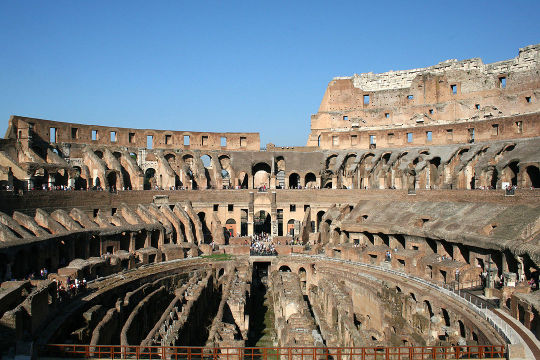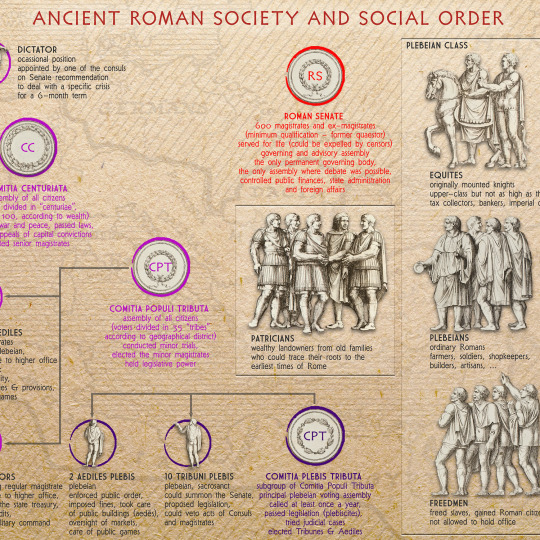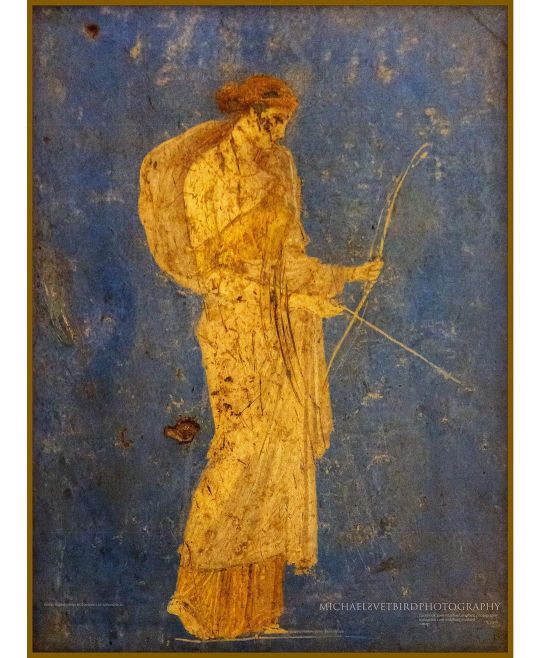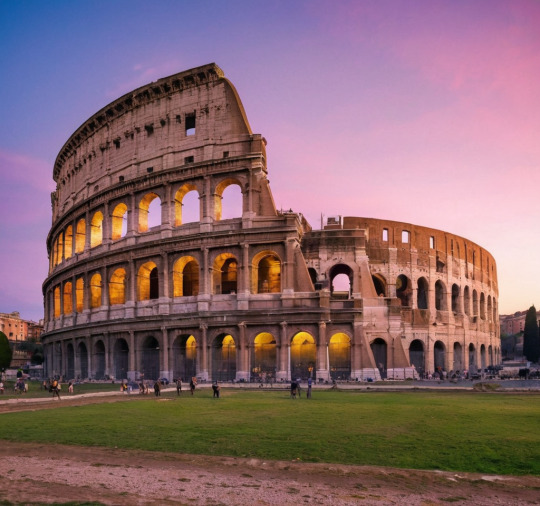#ancientrome
Text

get ready caesar
#ides of march#silly#julius caesar#marcus junius brutus#gaius cassius longinus#ancientrome#roman republic#shakespeare
5K notes
·
View notes
Text

Inside the Colosseum, Rome, Italy
184 notes
·
View notes
Text

The Piscina Mirabilis, built under Augustus (27 BC - 14 AD).
It's the biggest known cistern built by ancient Romans (15 metres high, 70 metres long and 25 metres wide), entirely dug out of the tuff hill.
Bacoli, Italy.
© Roberto Conte (2021)
266 notes
·
View notes
Text

Love in the Changing History of Ancient Rome
The love between a merchant's son and a gardener slave is a striking example of the fluctuating history of homosexuality in the Roman Empire. It stands as a symbol of hope and resistance in the late Roman Republic or early Imperial period. While not necessarily accepted, romantic relationships between men from different social strata were not uncommon. The two men likely had to live their love clandestinely and discreetly.
In the early Roman Republic, homosexuality between men was accepted and even considered normal. Mythology and art depicted relationships between men and gods that celebrated homosexuality. Several Greek and Roman gods and goddesses were associated with homosexuality, such as Eros, the god of love, who was often depicted with a young man.
However, Roman laws became increasingly repressive over time. In the 1st century BC, laws like the Lex Scantinia and the Lex Iulia de Adulteriis prohibited homosexual relationships between free men and between married men or men in domestic partnerships. The Lex Papia Poppaea granted tax benefits to married men and women, which led more people to marry and made homosexuality less acceptable.
The reasons for the tightening of these laws were multifaceted, including the rising influence of Christianity in the centuries after Christ, which viewed homosexuality as a sin. Additionally, homosexuality was believed to undermine the discipline of the Roman army and the traditional family.
Attitudes changed once more in the Late Antiquity. Homosexuality became increasingly accepted in Roman society, particularly due to the growing influence of paganism, which led to greater tolerance of homosexuality.
The polytheistic nature of paganism may have contributed to this reacceptance of homosexuality during a time when Christianity was no longer the dominant religion. In a polytheistic religion, there is no single source of authority that could prohibit homosexuality. Instead, there are many different gods and goddesses associated with various values and beliefs. Additionally, it was a period of change and uncertainty, during which people may have become more open to new ideas and convictions.
Text supported by Chat GPT 3.5 and Bard
These images were generated with StableDiffusion v1.5. Faces recalculated with inpainting.
#LoveInHistory#LGBTQHistory#gayart#AncientRomeLove#LoveKnowsNoBounds#HistoricalLove#Inclusivity#gaycomic#TimelessLove#ancientrome#mankissman#boykissboy#gayman#gay
213 notes
·
View notes
Text
Zeugma Museum, Turkey one of the largest mosaic museums in the world. The Roman city, submerged in water, preserves possibly the most beautiful mosaics in the world. They came to light during the construction of the Birecik dam.
(Video ©️Arkeoloji Evreni)
437 notes
·
View notes
Photo

Ancient Rome in 8 Infographics
The culture of ancient Rome intricately blended laws, military values, and cultural innovations to lay the groundwork for a civilization that endured for centuries. In this gallery of infographics, we examine some of the specific aspects of Roman culture such as the Twelve Tables legal code, the rigid social hierarchy, the organization of its famous military, and the enduring institution of the Roman emperors. We also look at how Roman roads were built and the fascinating construction details of Roman baths. Rome may not have been built in a day but it was certainly built to last.
Continue reading...
40 notes
·
View notes
Photo

Via Appia
Visne me tecum comitari?
#bear#beefy#chunky#hefty#husky#daddy#gorilla#beast#strong#hairy#mascular#gaybear#mature#roman#romanempire#ancientrome#romanlegionary#history#illustration#gayillustration#gayillustrations#brutebysimon
246 notes
·
View notes
Photo

: • ARTEMIS or APHRODITE Fresco: My take on this famous mural painting from Stabiae [near Pompeii], Ariadne's Villa, 1-45 AD. Approx h37cm X w27cm . "Artemis or Aphrodite, for her long dress, with the bow of Eros." [©MANN] . Museo Archeologico Nazionale di Napoli | MANN @museoarcheologiconapoli . MANN | Phs©MSP | 10|22 4840X3580 600 [i.] The photographed object is the property of MANN and subject to the Museum copyright. All labels & descriptions txt ©MANN. https://mann-napoli.it/en/home-english [no commercial use | sorry for the watermarks] . • Part of the 'MANN.Selected' MSP Online Gallery: . • D-ART: https://www.deviantart.com/svetbird1234/gallery/76957935/mann-selected . • FB Album: https://www.facebook.com/media/set/?set=a.1329554957413078&type=3 . . #naples #napoli #mann #archaeologicalmuseum #museoarcheologico #ancientart #stabiae #ancientrome #ancient #fresco #mural #frescoes #antiquity #archaeology #arthistory #museology #mythology #artemis #άρτεμις #artemide #artemida #aphrodite #αφροδιτη #aphrodita #afrodita #goddess #archaeologylovers #archaeologyphotography #museumphotography #michaelsvetbird ©msp @michael_svetbird 10|22 mann @museoarcheologiconapoli (at Museo Archeologico di Napoli) https://www.instagram.com/p/Ck8DGQOIpUK/?igshid=NGJjMDIxMWI=
#naples#napoli#mann#archaeologicalmuseum#museoarcheologico#ancientart#stabiae#ancientrome#ancient#fresco#mural#frescoes#antiquity#archaeology#arthistory#museology#mythology#artemis#άρτεμις#artemide#artemida#aphrodite#αφροδιτη#aphrodita#afrodita#goddess#archaeologylovers#archaeologyphotography#museumphotography#michaelsvetbird
178 notes
·
View notes
Text
The Colosseum, Rome, Italy

7 notes
·
View notes
Text
Roman mosaic depicting a bird

ITEM
Mosaic depicting a bird
MATERIAL
Tesserae
CULTURE
Roman
PERIOD
3rd Century A.D
DIMENSIONS
400 mm x 440 mm x 40 mm
CONDITION
Good condition
PROVENANCE
Ex Swiss private collection, E.O., Geneve, acquired before 1990s
Roman mosaics are renowned for their intricate designs and enduring beauty, often depicting various motifs that reflect the cultural and artistic sensibilities of the time. Among these motifs, the depiction of birds holds particular significance in Roman art. Birds were commonly featured in Roman mosaics for their symbolic meanings, which varied depending on the species portrayed. The birds motif in Roman mosaics served both decorative and symbolic purposes, enriching the visual appeal of the artwork while conveying deeper layers of meaning to the viewer.
In Roman art, birds were frequently associated with themes of freedom, transcendence, and divine communication. Depictions of birds such as doves, eagles, and peacocks symbolized different aspects of Roman society and belief systems. For example, doves were often associated with peace and love, while eagles were emblematic of power and authority, often representing the Roman state and its military prowess. Peacocks, with their vibrant plumage, were symbols of immortality and resurrection in Roman mythology, associated with deities such as Juno and Hera.
The
Read the full article
#ancient#ancientart#ancienthistory#artefact#artifact#ancientartifacts#antiquities#antiquity#art#artobject#ancientrome#ancientworld#history#classical#archaeology#roman#mosaic#bird#tessera#tesserae#animal
3 notes
·
View notes
Photo

Sevika/Jinx ancient Rome au
Sevika as Hannibal Barca,Jinx as Publius Cornelius Scipio Africanus
16 notes
·
View notes
Text

The Colosseum of Rome, Italy
77 notes
·
View notes
Text

A Spontaneous Kiss: Deep Affection Between Soldiers
In the world of ancient Rome, where camaraderie and adventure defined the lives of soldiers, deep emotions sometimes ignited between them, leading to profound friendships and even erotic or sexual connections.
Roman society had a much more open view of love and relationships than many later eras. Among Roman soldiers, camaraderie and trust among comrades were highly esteemed. It was not uncommon for close emotional bonds to form between men who faced adventures and challenges together.
During this era, homoerotic relationships were not as stigmatized as they would be in later history. They were often regarded as expressions of friendship and mutual respect. It reminds us that love and affection have existed in all their forms throughout every era. Acceptance of love between individuals, regardless of gender or orientation, is an essential part of human history—a timeless truth that love can bloom anywhere, even in the most unexpected moments of history. It is a tribute to the power of human emotions and the diversity of human love that connects us in every age.
#LoveInHistory#LGBTQHistory#gayart#AncientRomeLove#LoveKnowsNoBounds#HistoricalLove#Inclusivity#gaycomic#TimelessLove#ancientrome#mankissman#boykissboy#gayman#gaysoldiers#romanbath#LGBT#queer
186 notes
·
View notes
Photo

This Roman bronze oil lamp fixture in the form of a snail peeking out of its shell was found in Pompeii, dating to the C1st BC or AD. 🐌 ✨🤎 📸✨Mary Harrsch #history #rome #ancientrome #pompeii #ancient #ancientcivilization #ancienthistory #ancientart #historynerd #historyfacts #historylovers #historybuff #historylover #coolfacts #snail #snails #snailshell #snailsofinstagram #snailsbelike #homedecor #homedesign #interiordesign (at Pompeii, Italy) https://www.instagram.com/p/CoxKO7hLL3b/?igshid=NGJjMDIxMWI=
#history#rome#ancientrome#pompeii#ancient#ancientcivilization#ancienthistory#ancientart#historynerd#historyfacts#historylovers#historybuff#historylover#coolfacts#snail#snails#snailshell#snailsofinstagram#snailsbelike#homedecor#homedesign#interiordesign
9 notes
·
View notes
Text
Coliseo, Roma
(Vídeo ©️ig_rome)
333 notes
·
View notes